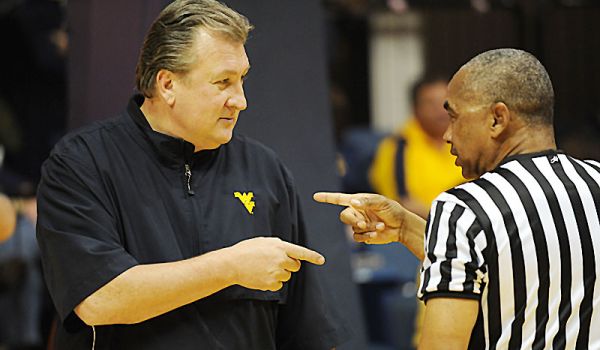College Basketball’s Grinch: A Deeper Look at West Virginia’s Press
Posted by Chris Stone on December 21st, 2015After five straight seasons of NCAA Tournament appearances including a run to the 2010 Final Four, West Virginia missed out on March Madness altogether in its first two years in the Big 12 (2012-13 and 2013-14). A 13-19 season was followed by a 17-16 mark, and after that disappointing season, the team’s second leading scorer, Eron Harris, announced plans to transfer. To outside observers, it appeared that the program was in something of an identity crisis. The next season, the Mountaineers were subsequently picked to finish sixth in the preseason Big 12 poll. But rather than to wallow in mediocrity, head coach Bob Huggins opted to make a significant change to his style of play. That process has been well-documented by both Raphielle Johnson from NBC Sports and C.J. Moore at Bleacher Report, but the short version is that Huggins enlisted the help of former Cleveland State coach Kevin Mackey to implement a faster pace and full-court press. The first-year results were impressive, as the Mountaineers became the most proficient team in college basketball at turning opponents over and their adjusted defensive efficiency shot 100 spots up the rankings. West Virginia finished tied for fourth place in the Big 12 standings with a 25-10 (11-7) record before making a run to the Sweet Sixteen.

With a revamped pressure defensive philosophy, West Virginia is climbing its way up the college basketball mountain. (USA TODAY Sports)
Through the first month of this season, the Mountaineers once again lead the country in defensive turnover rate. They are sixth in overall adjusted defensive efficiency and figure to again be a tough out in March. While many have already written about how “Press Virginia” came into existence, few have examined what makes the defense really tick. Last Thursday, in a below average defensive performance, West Virginia defeated intrastate rival Marshall, 86-68. It created a turnover on 24.7 percent of possessions, a number well below its 30.3 percent season average. However, the game still offered several insights into how Press Virginia operates. Let’s start with a full possession from early in the game.
The ball is guarded by Jonathan Holton (#1), a 6’7″ big man who is the key to the strategy’s success. Note that athletic players Esa Ahmed (#23) and Jevon Carter (#2) are prepared to pester the players most likely to received the inbounds pass. Meanwhile, Daxter Miles Jr. (#4) and Devin Williams (#41) set up near midcourt to prevent outlet passes over the pressure. Carter forces a tough inbounds pass. When Marshall receives the ball, Holton goes to work reading the ball-handler, the help defenders down the court and his man. When the time is right, he pounces into a double team. The Marshall ball-handler correctly passes out of it to his teammate, who attempts to whip a pass forward to gain a numbers advantage, but Miles is waiting.
Holton’s role is critical here because he is the one who makes the decision to bring the double team. But even if Marshall gets past the initial double-team, another one will be waiting. “After the first couple traps, you know those are coming, but then they trap you in the half-court as well. They don’t stop trapping until they get the ball,” Baylor’s Taurean Prince told the media back in October. If you pass out of the first double-team, West Virginia traps again as soon as the ball lands. When an opponent catches the ball near the sideline, the Mountaineers use that as a third defender to create a turnover, as they do below.
The full-court press has been very effective for Huggins, but last season the Mountaineers struggled with teams that could get ahead of the press to score in the half-court. This year West Virginia has a more complete defense. While they still give up their fair share of layups, Huggins’ group now ranks among the top 50 in defensive effective field goal percentage. They have become the best team in the country at defending the three-point line and they do a good job of crashing the defensive boards. Combine those attributes with their top-notch ability to force turnovers, and that results in one of the best defensive teams in the nation.









































